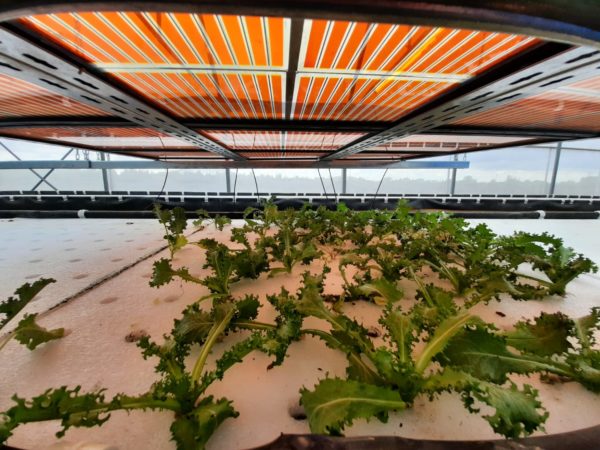Researchers at the University of Rome Tor Vergata in Italy have developed an organic solar panel based on dye-sensitized solar cells (DSSCs) for applications in greenhouses.
“We used the panels to investigate the trade-off between energy production for an advanced aquaponics greenhouse, and its effect on filtering light for crop growth,” research author, Luigi Vesce, told pv magazine. “We covered a 2 m2 greenhouse area with 40 modules.”
The solar panel has a power conversion efficiency of 3.88% and a transparency of 35%. Its active area measures 221 cm2 and the module’s aperture area is 312.9 cm2. Its creators claim the module exhibited significant stability when stressed for 1,000 hours at temperatures ranging from 60 to 85 Celsius degrees and under light soaking.

Image: Tor Vergata University of Rome
The solar cells were connected in series by the research through a manufacturing process that occurs completely in ambient air. “The width of the single-cell was designed according to well-known compromises between losses in the efficiency of the geometrical area and resistivity of the transparent FTO electrodes,” said the team. The photoelectrode and the counter-electrode were made of glass and screen printed with silver contacts.
Titanium dioxide (TiO2) paste provided by Australia-based manufacturer GreatCell was applied to the photoelectrode. “The resulting layer of TiO2 acting as a wide band-gap semiconductor was 5 μm thick with an approximately 20 nm particle size, in accordance with a TiO2 layer for semi-transparent application,” the scientists noted, adding that the module was assembled by laminating two cell strings via a hot vacuum lamination process using an industrial laminator. “Two 4 mm-thick tempered glasses were used as external substrates and two 450 m-thick low temperature cross-linking EVA sheets as encapsulants.”
Popular content

Image: Tor Vergata University of Rome
When tested in the greenhouse, the panel initially showed an average efficiency of 2.5%, an average voltage of 8.9 V, and an average current of152 mA. Its nominal power was found to be between 2 and 3 W. After a few days, however, the power conversion efficiency increased by around 30%. “Typically, in DSSC technology the best efficiencies are observed several days after the device manufacture,” the Italian scientists explained.
According to them, the solar modules are capable of supplying a portion of the electricity required to power the greenhouse's temperature and humidity sensors. “Preliminary results concerning plant growth under filtered light from DSSCs suggest no differences between the growth of lettuce under natural and DSC-filtered light,” they said, adding that more research is needed.
All the technical details on the new module can be found in the paper Stable Semi-Transparent Dye-Sensitized Solar Modules and Panels for Greenhouse Application, which was recently published in Energies.
This content is protected by copyright and may not be reused. If you want to cooperate with us and would like to reuse some of our content, please contact: editors@pv-magazine.com.



1 comment
By submitting this form you agree to pv magazine using your data for the purposes of publishing your comment.
Your personal data will only be disclosed or otherwise transmitted to third parties for the purposes of spam filtering or if this is necessary for technical maintenance of the website. Any other transfer to third parties will not take place unless this is justified on the basis of applicable data protection regulations or if pv magazine is legally obliged to do so.
You may revoke this consent at any time with effect for the future, in which case your personal data will be deleted immediately. Otherwise, your data will be deleted if pv magazine has processed your request or the purpose of data storage is fulfilled.
Further information on data privacy can be found in our Data Protection Policy.